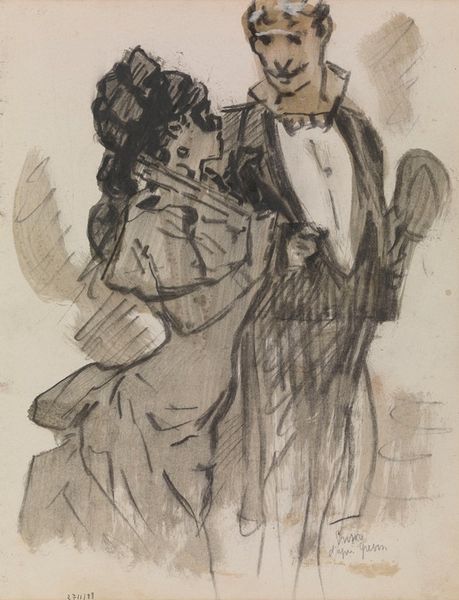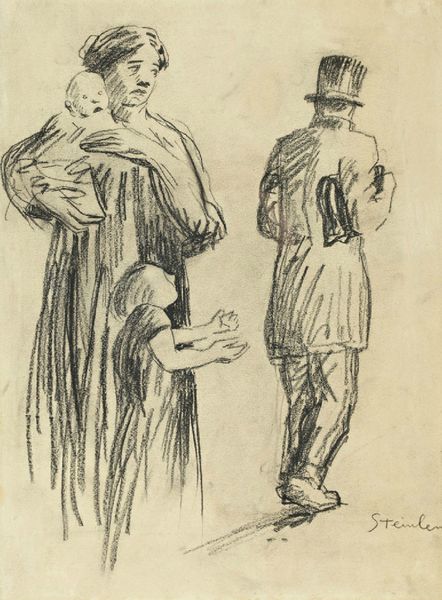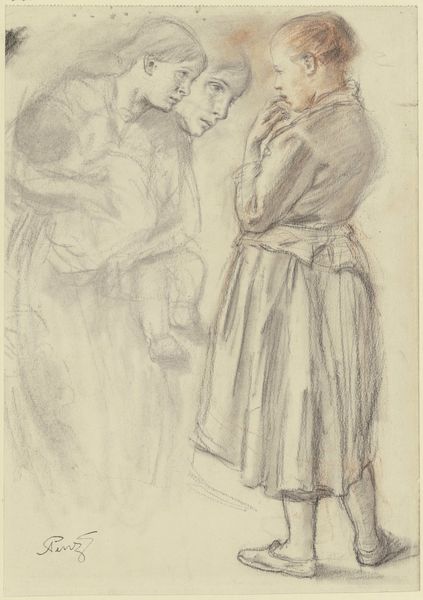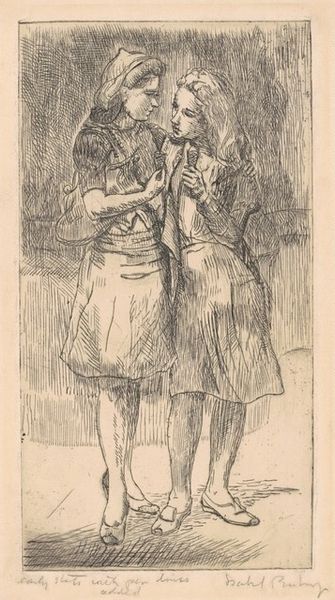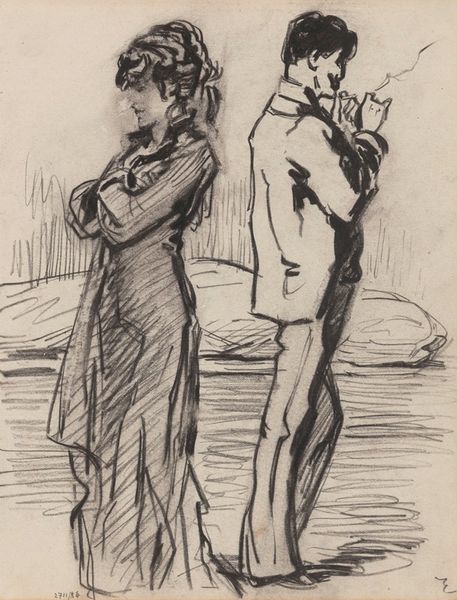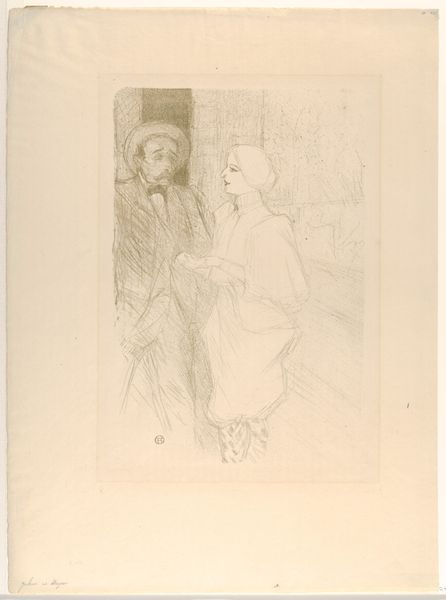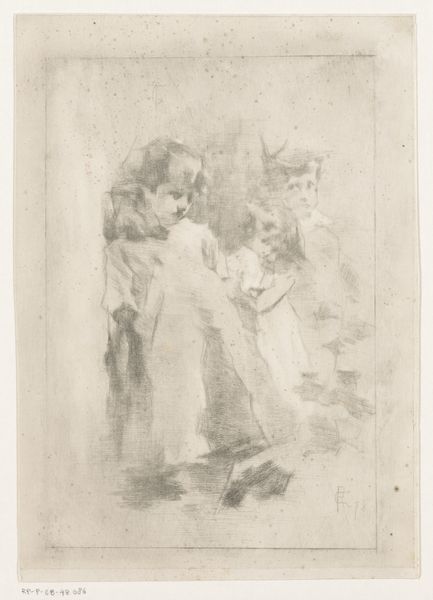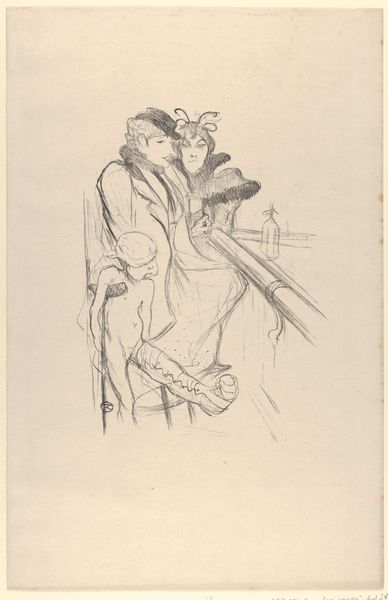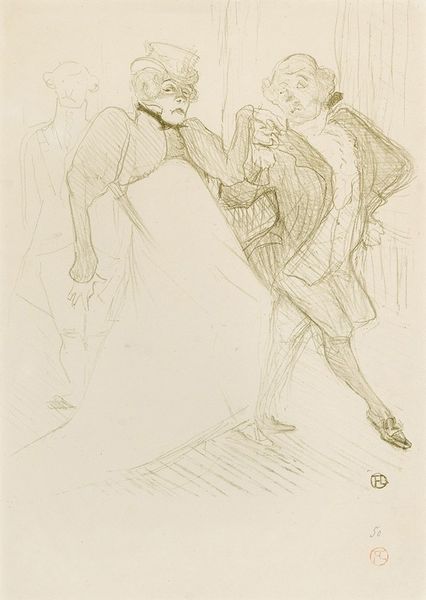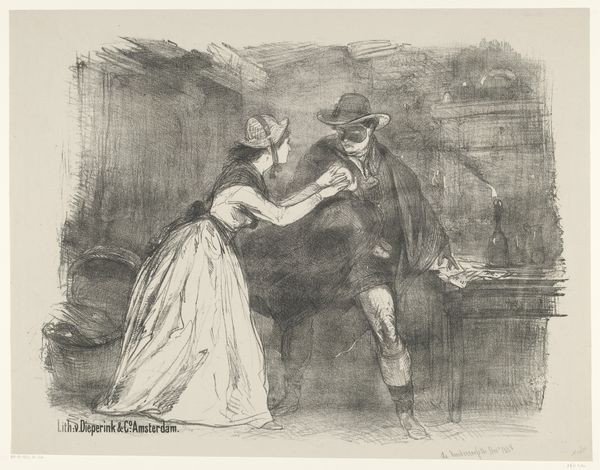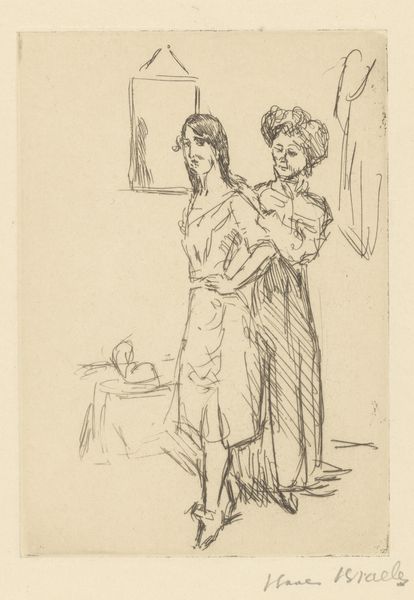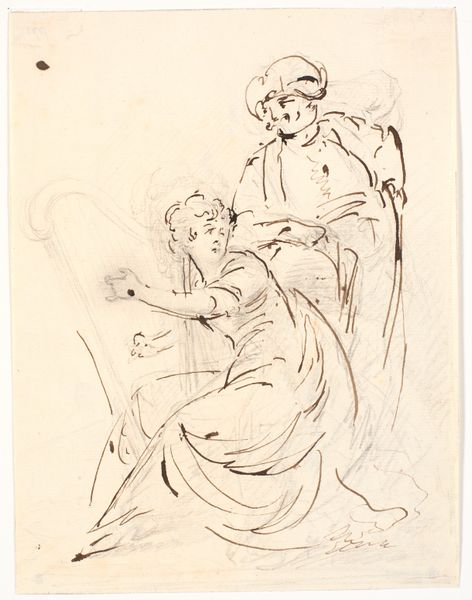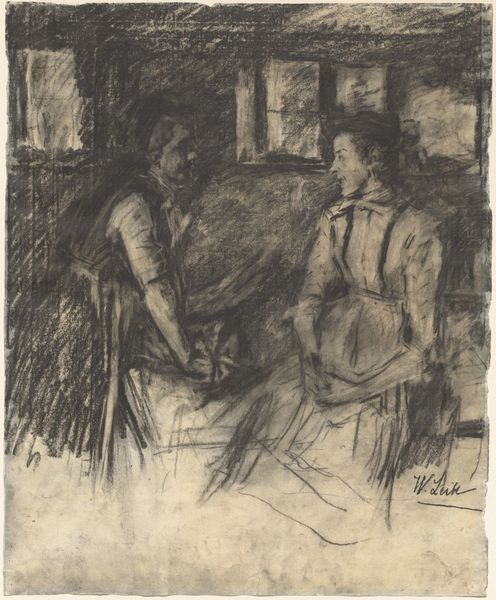
The Descent from the Summit: Jean Martin Steadies Hélène, the Banker’s Daughter (Illustration for Edmond Renoir’s “L’étiquette”) (recto); Half-Length Sketch of a Woman (verso) 1881
0:00
0:00
drawing, paper, charcoal
#
drawing
#
impressionism
#
landscape
#
figuration
#
paper
#
pencil drawing
#
line
#
charcoal
Dimensions: 492 × 319 mm
Copyright: Public Domain
Curator: Look at this lovely charcoal and pencil drawing by Pierre-Auguste Renoir, dating back to 1881. It's titled "The Descent from the Summit: Jean Martin Steadies Hélène, the Banker’s Daughter." Editor: Ah, yes, I see her, the banker's daughter, looking slightly winded, perhaps even annoyed at being helped. It’s all in the posture, isn’t it? That little pout, the way she holds her skirts… the perils of high society in heels, eh? Curator: Exactly! It’s intriguing to think about the social dynamics at play here. The work was actually created as an illustration for a story called "L'étiquette," suggesting Renoir was very attuned to societal expectations. Consider the labor invested in those garments, rendered so delicately with the pencil work. This reveals a culture of very specific production. Editor: Indeed. And Renoir really captures the texture of the fabric with such simple strokes, doesn't he? It makes me wonder about the setting, too. Are they truly descending from a summit, or is this a more metaphorical fall from grace, played out on the grounds of some bourgeois estate? Curator: It's possible to read it both ways, especially when we factor in that this was also made as a page for a collection of drawings, likely made for viewing and appreciation by a collector who understood the relationship between capital and art making. These drawings, seemingly small, became the means to a broader project for Renoir. Editor: It feels incomplete though, doesn't it? More a whisper of a narrative than a full blown story. A charcoal sonnet, if you will, filled with light and shadow, suggestion and innuendo. I think Renoir revels in the lack of completion. Curator: Well said. And the fact that it's a drawing, rather than a finished painting, allows us to really focus on Renoir's process, the means of production, you could say, stripping away some of the artifice often associated with high art. He is working with simple materials, elevated by his craft. Editor: In the end, that’s all that matters: the crafting and the means of production and consumption of art. Curator: Yes, there's a definite blurring of the lines between high art and the materials from which art emerges in a culture itself. It's wonderful how this drawing manages to evoke such rich textures using minimal materials. Editor: Absolutely. Each element adds something profound. It's that strange intersection of narrative, the economy, production, materials and personal touch that truly brings an artwork to life, isn’t it?
Comments
No comments
Be the first to comment and join the conversation on the ultimate creative platform.

